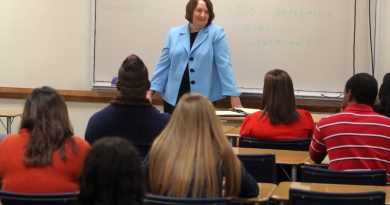Washington Student Achievement Council continues research into school-to-work pathways
The National Center for Education Research (NCER) recently granted a $1 million fund to expand ongoing research.
On April 9, the Washington Student Achievement Council (WSAC) announced new funding to expand an ongoing research project that investigates career opportunities available for young` 1 adults following high school or college.
The project was initially announced in January when the WSAC partnered with Manpower Demonstration Research Corporation (MDRC), a nonprofit research organization.
The project will be 3+ years long and investigates common school-to-work pathways, along with alternative options such as dual enrollment and non-degree programs.
Data for the research is being provided by the Washington Education Research & Data Center (ERDC), and the original funding of $750,000 was provided by the Bill & Melinda Gates Foundation to MDRC.
The project seeks to discover what pathways lead to the best academic and labor market outcomes, both in Washington state and across the nation.
In addition to researching general pathways for young adults, the study also will observe demographic, geographic and academic factors to find out if there are patterns within school to career pathways. By considering these, the study can find areas for policy intervention that can create a more balanced and accessible educational system for students regardless of these factors.
“After leaving high school, students face many options for what comes next,” said Executive Director Michael Meotti of WSAC in a press release. “We want to help them make informed decisions about their futures, and this innovative research will surface evidence-based insights that we can share with learners and families.”
The project is still in its early stages, as the WSAC is awaiting IRB approval before moving towards accessing the appropriate data necessary for the project.
Through their research, WSAC wants to answer questions that many young adults may be asking themselves when considering what the best career choice to make is following high school.
Two notable questions are whether postsecondary education is worth the time and financial commitment, and what career pathways might be underutilized for the value they hold for both the individual and Washington’s economy.
“We think the data will be able to tell us really interesting stories about both these questions,” said Associate Director of Research and Program Evaluation KC Deane of WSAC.
Following the $1 million grant, additional resources will be available for the project to investigate communities across Washington state.
“We will be able to take what we learn about post-high school pathways for learners who participate in dual enrollment, then talk with dual enrollment learners to understand how they learned about dual enrollment and why they decided to pursue it,” Deane said.
For many young adults after high school, choosing the right degree and career pathway requires careful consideration that causes high levels of stress to many students.
Dual enrollment often begins in 11th grade, pushing another major decision to be considered at a young age.
“I probably would not want to go to college,” said Matthew Joy, a senior at Silas High School. “I think if I was unsure about a career that I would pick some type of trade.”
While various career pathways continue to be explored by young adults, WSAC is readily working with organizations and communities to make the process easier by providing information and research-based information to help guide students.
Featured Image, Student and resume cap. Illustrated by Cole Martin.





